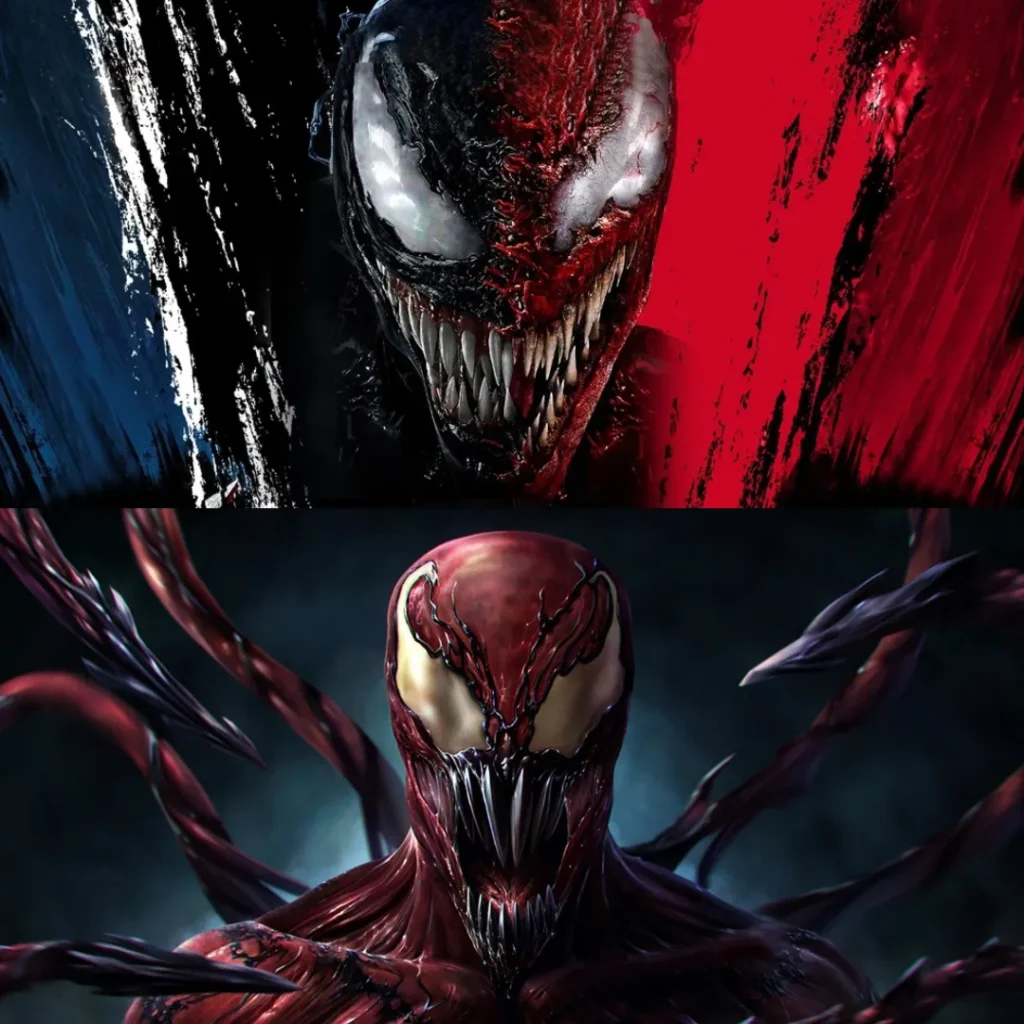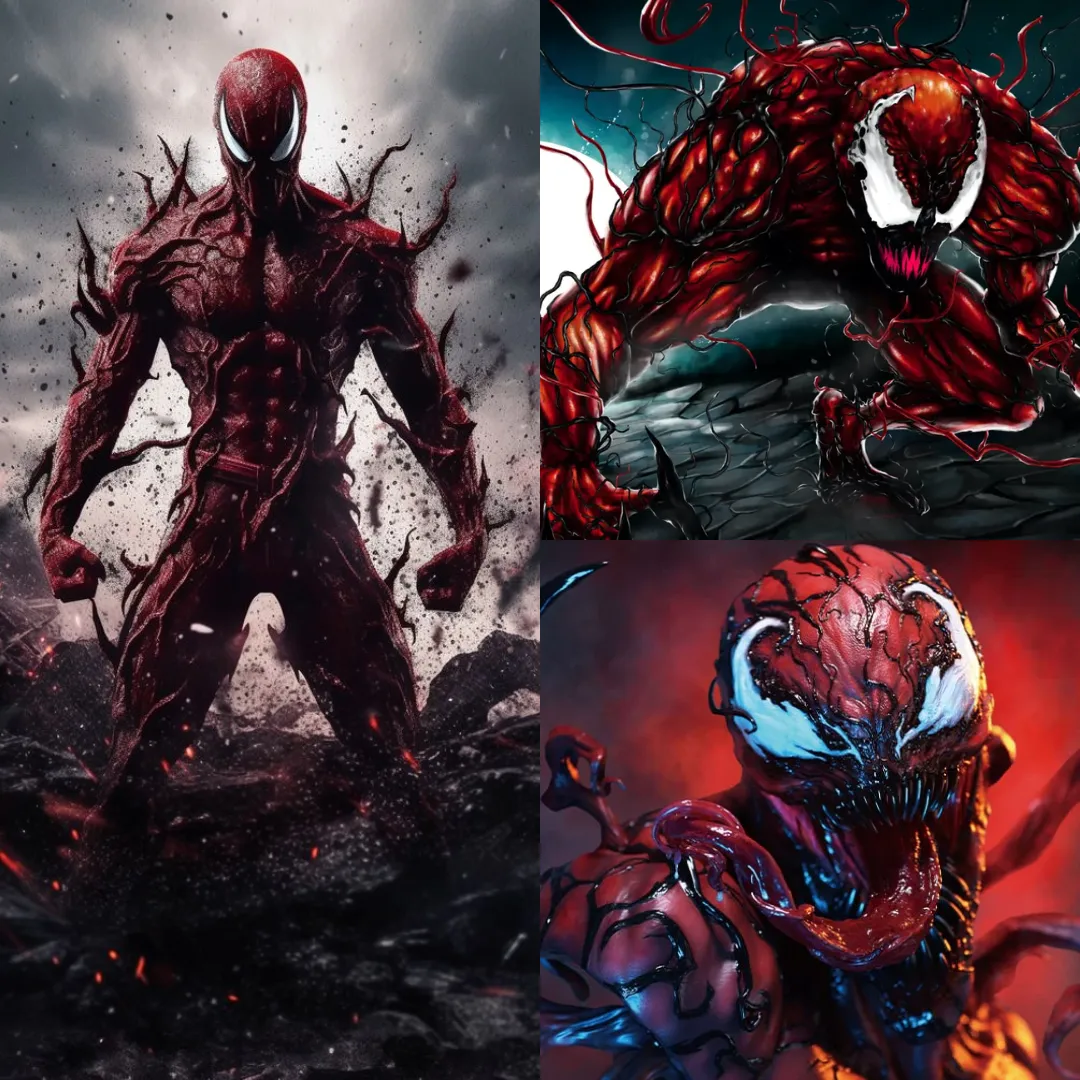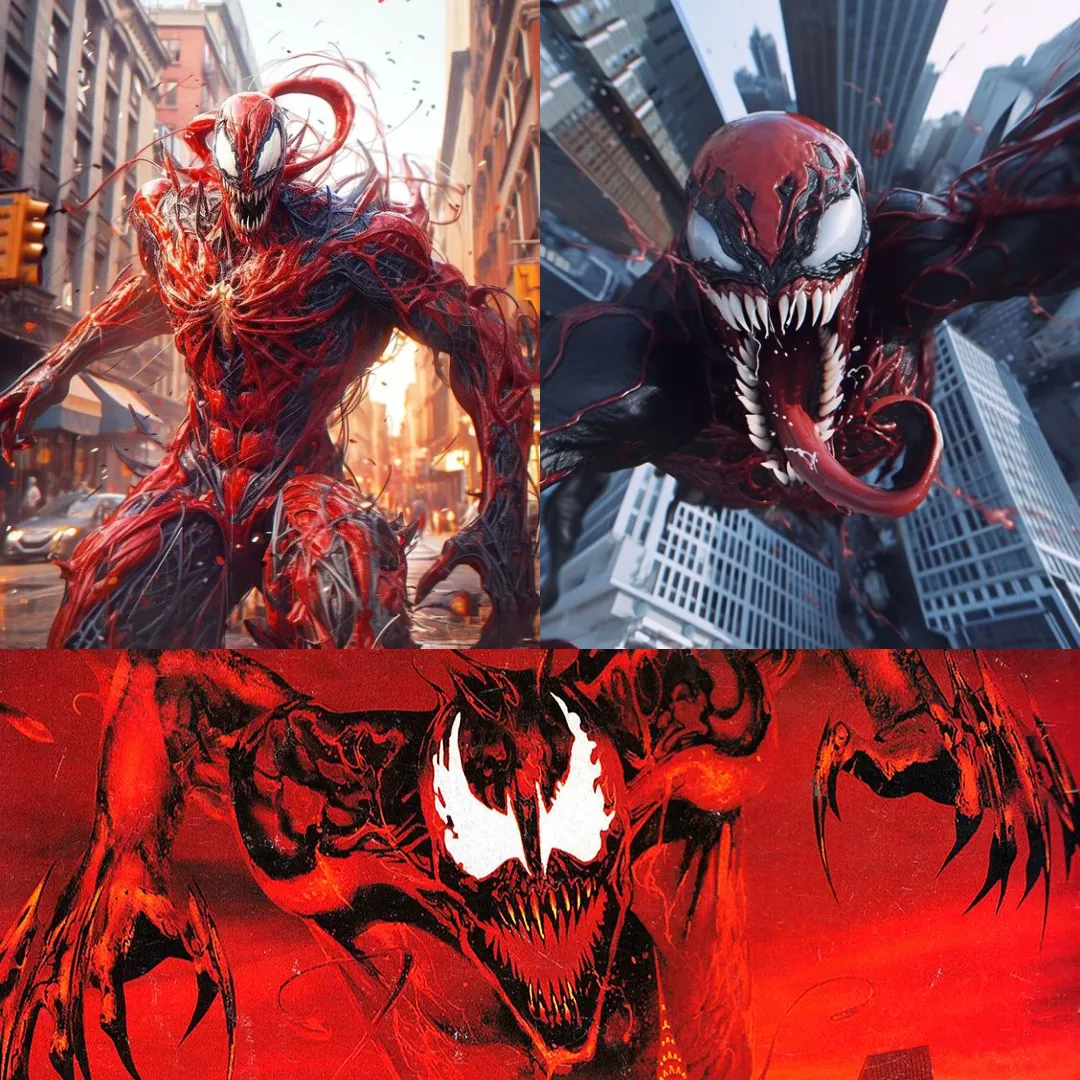
Carnage, the infamous Marvel supervillain, is a character defined by pure chaos and evil. Unlike Venom, who is driven by a complex mix of motives and often teeters on the edge of anti-heroism, Carnage is unrelentingly villainous. His origin story is simple yet horrific: Cletus Kasady, a sadistic serial killer, bonds with the spawn of Venom’s symbiote, transforming into Carnage — a creature of destruction with no ethical compass, driven solely by bloodlust.
Table of Contents
ToggleThe Creation of Carnage: A Response to the 1990s Comic Trends

Carnage’s debut in 1992’s Amazing Spider-Man #344 came at a time when comics were undergoing significant shifts. Artists like Todd McFarlane and Erik Larsen were becoming stars, shifting the focus from writers to visuals. Larsen, in particular, was dissatisfied with Venom and wanted to create a villain that would embody the era’s style — extreme, over-the-top, and grotesque. Carnage, with his bloody violence and terrifying appearance, fit perfectly into the ’90s comic aesthetic, characterized by excessive detail, gooey symbiote designs, and villains who were larger-than-life.
In this period, Marvel capitalized on the success of Venom, and Cletus Kasady was created as a dark mirror to Eddie Brock. Where Venom was a conflicted antihero, Carnage was a killer without remorse, driven by the symbiote’s alien powers and his own love for violence. His chaotic nature made him a standout in the Spider-Man universe, even if he lacked the narrative weight of more established villains like Green Goblin.
Carnage’s Evolution and Modern Storylines
Over the years, Carnage became a recurring character, often appearing in large crossover events like Maximum Carnage (1993), where he terrorized New York with an army of villains. Despite his popularity, Carnage’s character arc stagnated in the late ‘90s and early 2000s. As Marvel moved away from the “extreme” style of the ‘90s, Carnage was sidelined in favor of more grounded stories, and his appearances became sporadic.

However, in recent years, Carnage has been redefined. In 2019’s Absolute Carnage miniseries, writer Donny Cates gave the character a new sense of purpose by linking him to Knull, an ancient evil god who created the symbiotes. This lore added depth to Carnage’s motivations, transforming him from a mindless killer into an avatar of cosmic destruction. The storyline provided Carnage with a larger role in the Marvel Universe, introducing a mythology surrounding the symbiotes that tied back to Venom and expanded their shared history.
Carnage in Pop Culture: From Comics to Film
Carnage’s rise in popularity has not been confined to the comics. In 2019’s Venom: Let There Be Carnage, Woody Harrelson portrayed Cletus Kasady on the big screen. The film’s success showcased Carnage as a major Marvel antagonist, with a performance that captured the chaotic energy of the character. His inclusion in the movie marks the character’s shift from a comic book villain to a major cinematic presence, potentially paving the way for his involvement in future Spider-Man and Venom films within the Marvel Cinematic Universe (MCU).
Whether in the comics or on screen, Carnage continues to represent the darkest impulses of villainy — chaotic, unpredictable, and always dangerous. As the Marvel Universe evolves, so too does the menace of Carnage, making him a terrifying force in both the pages and the box office.






